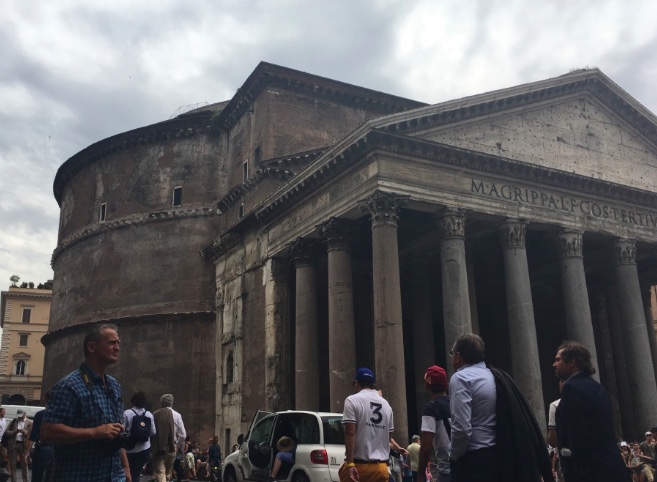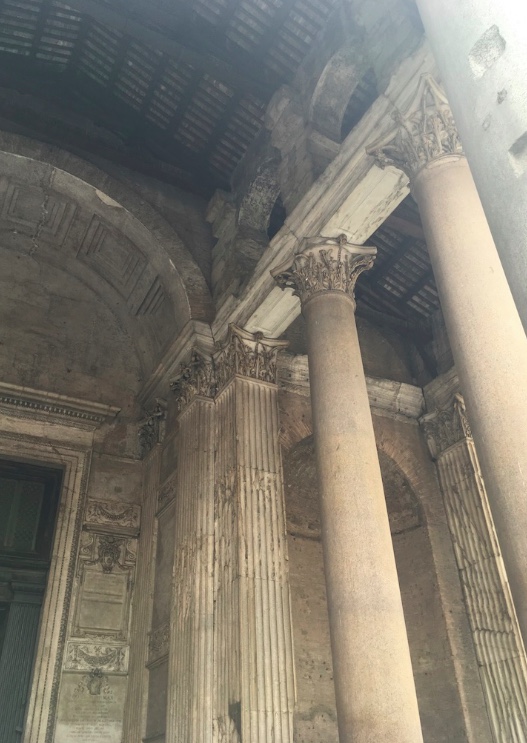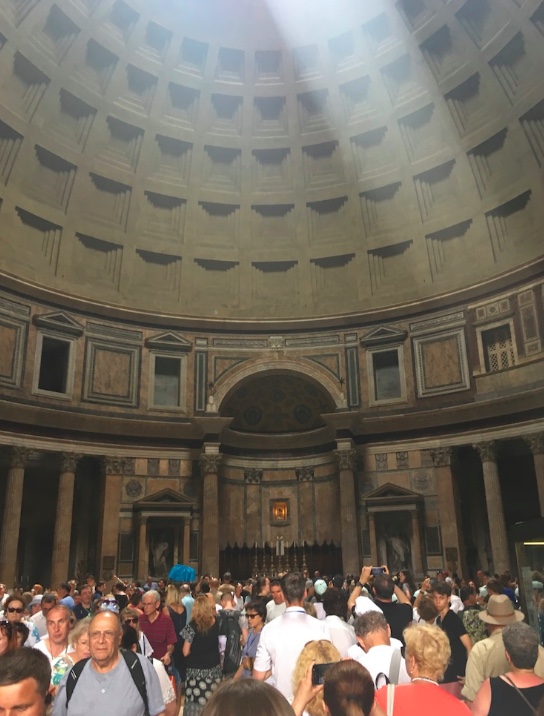I wasn’t sure what it was, either. The Pantheon is one of those things you hear about via cultural osmosis without thinking hard enough about it to Google it.
So here’s what the Pantheon looks like from outside:

(Here’s the roof under the portico—more recent, I would suspect, because Rome is much too damp for wood joists to last two thousand years.)

And here’s the interior:

Quick crash course in Pantheon history:
The original pantheon was built during the reign of Augustus (27 BC to 14 AD) by Marcus Agrippa, whose name is on the pediment, but it burned down at some unknown point between then and 126 AD when Emperor Hadrian dedicated the new building. (The fact that the original pediment was retained has caused some confusion with dates.)
The pantheon boasts the largest unsupported concrete dome in the world—and it’s 2,000 years old. The Romans could obviously teach us some things about architecture.
In 609 AD, Pope Boniface IV converted the Pantheon into a church dedicated to St. Mary and the martyrs. Twenty-eight cartloads of relics were brought up from the Roman catacombs and ensconced in the new church.
In the early 17th century, much of the original bronze decoration (including the roof) was stripped away from the Pantheon and recast into cannons for Castel Sant’Angelo.
The frieze below the dome was “restored” in the 1720s but bears no resemblance to the original.
Now, the Pantheon receives more than six million visitors each year, so stepping inside is kind of like falling into the mosh pit.